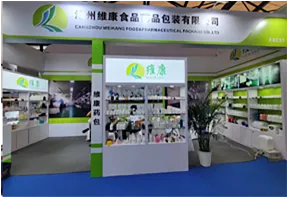https://www.wahmg.com/)">
Exploring Various Applications of Petri Dishes in Scientific and Laboratory Environments
Exploring Various Applications of Petri Dishes in Scientific and Laboratory Environments
The Uses of Petri Dishes in Laboratory Settings
Petri dishes, also known as Petri plates or cell-culture dishes, are one of the most iconic pieces of equipment in laboratories, especially those engaged in microbiology and cell culture. Invented in the late 19th century by German bacteriologist Julius Richard Petri, these shallow, flat, cylindrical dishes with lids have become essential for a myriad of applications. Their simplicity and effectiveness make them invaluable tools in various scientific fields.
The Uses of Petri Dishes in Laboratory Settings
In medical laboratories, Petri dishes play a critical role in diagnosing infections. Practitioners can culture pathogenic microorganisms from patient samples, allowing them to identify specific bacteria or fungi responsible for an illness. This identification is crucial not just for accurate diagnosis but also for determining the appropriate course of treatment. By assessing the growth characteristics of the microbes and conducting antibiotic sensitivity tests, healthcare professionals can devise effective treatment plans tailored to the patient's needs.
petri dish uses laboratory

In addition to their role in microbiology, Petri dishes are also employed in plant tissue culture. Researchers use them to propagate plant cells, tissues, or organs in a sterile environment. By introducing plant cells into a nutrient-rich medium contained within the dish, scientists can cultivate new plant varieties or conduct experiments on plant responses to different stimuli. This technique is vital in agriculture, horticulture, and conservation, as it helps to create disease-resistant plant strains or propagate endangered species.
Furthermore, Petri dishes are increasingly utilized in the field of education. They provide an excellent hands-on learning experience for students in biology and environmental science classes. Experiments involving microbial growth, antibiotic resistance, and genetic transformations can be conducted using Petri dishes, making complex scientific concepts more tangible and engaging. This practical approach helps to cultivate a new generation of scientists by stimulating curiosity and fostering skills in experimentation and observation.
Another innovative use of Petri dishes is in experimental physics and materials science. Researchers use them to grow thin films of materials, conduct crystallization experiments, and even create biofilms for studying material behavior under various conditions. The transparent nature of Petri dishes allows for easy observation, making them ideal for experiments that require precise measurement of changes over time.
In conclusion, the versatility of Petri dishes makes them a cornerstone of laboratory research across multiple disciplines. From microbiology and medical diagnostics to plant tissue culture and educational settings, these simple yet effective tools enable scientists to explore, analyze, and innovate. As research continues to advance, the Petri dish will undoubtedly remain an essential instrument in laboratories around the world, contributing to our understanding of life sciences and the development of new technologies. Its legacy as a fundamental tool in the scientific toolkit is immortal, reflecting the spirit of inquiry and the quest for knowledge that drives scientific discovery.
-
Wholesale Plastic Juice Bottles with Caps 16 oz Options Available Bulk Packaging SolutionsNewsJun.10,2025
-
Laboratory Apparatus Reagent Bottle – Durable & Chemical Resistant Bottles for Safe StorageNewsJun.10,2025
-
Squeezable Dropper Bottles Durable, Leak-Proof & CustomizableNewsMay.30,2025
-
Affordable Plastic Petri Plates Sterile & Disposable Lab-GradeNewsMay.30,2025
-
Eye Dropper Caps Precision 24/410 & Plastic Bottle-Compatible TipsNewsMay.30,2025
-
Affordable Mini Spray Bottle Price & Wholesale Deals Shop NowNewsMay.29,2025





















